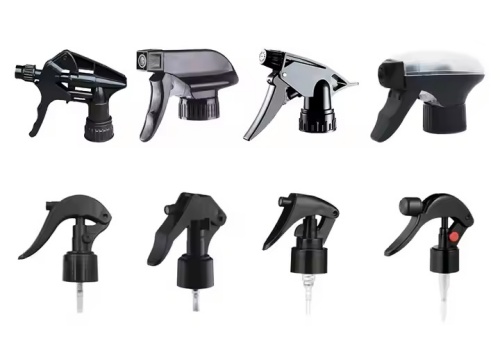Leave a Message
We will call you back soon!
 Your message must be between 20-3,000 characters!
Your message must be between 20-3,000 characters!
 Please check your E-mail!
Please check your E-mail!
 Please check the verification code!
Please check the verification code!
SUBMIT
Plastic Spray Bottles: A Comprehensive Overview
Plastic spray bottles have become indispensable tools in household cleaning and disinfection due to their convenience, safety, and versatility. Below is an expanded analysis of their features, applications, and market trends, supported by industry data and technical specifications.

1. Product Characteristics: Safety, Durability, and Ergonomics
Plastic spray bottles are primarily made from PET (polyethylene terephthalate) and PE (polyethylene), which offer excellent resistance to acids, alkalis, and corrosive chemicals, making them ideal for storing cleaning agents and disinfectants. For instance, PET’s transparency and non-toxic properties suit liquid formulations, while PE’s heat resistance is preferred for heavy-duty kitchen cleaning.
Innovative designs enhance user experience:
Trigger sprayers with auto-lock mechanisms prevent accidental leaks.
Multi-mode nozzles (mist, stream, foam) allow adjustable flow rates, with some models achieving 3-6 meters of spray range.
UV printing, hot stamping, and silk-screening enable brand customization, catering to institutional needs like hospitals and schools.
2. Application Scenarios: Versatility Across Domains
Household Cleaning
Kitchen Oil Removal: High-pressure sprayers paired with degreasers efficiently break down stubborn residues.
Bathroom Sanitation: Compact designs facilitate deep cleaning of hard-to-reach areas with disinfectants.
Public Health Disinfection
Large-capacity bottles (500-1000ml) are standard for public spaces, accommodating high-concentration disinfectants like alcohol and chlorine solutions.
Travel-sized variants (120-230ml) are used for personal sanitizers or pet care products, with lightweight designs (23-50g).
Gardening and Pet Care
Small bottles dispense plant nutrients or pet grooming solutions, often featuring 24mm narrow necks for portability.
3. Market Trends: Customization and Sustainability
Functional Diversification:
Car care bottles with extended nozzles for vehicle cleaning.
Travel-sized bottles for on-the-go use, emphasizing 24mm narrow necks.
Eco-Friendly Production:
Adoption of food-grade materials and ISO-certified processes.
Recycling initiatives repurpose old bottles into planters or storage containers.
Conclusion
Plastic spray bottles are evolving to meet modern demands through smart trigger and biodegradable materials, balancing safety and environmental responsibility. Manufacturers are leveraging cross-border e-commerce and customization services to expand market reach, positioning these bottles as essential tools in daily life.